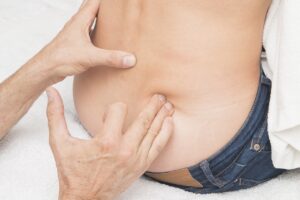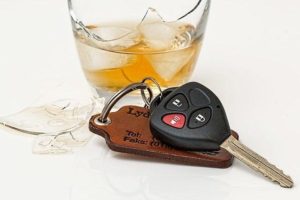Motorcycle accidents can lead to various types of injuries, and one common complaint among survivors is hip pain. The hip joint is particularly vulnerable during such accidents due to the impact forces involved. Understanding the causes, seeking medical attention, and employing appropriate treatment methods are crucial for managing hip pain effectively. Additionally, there are home remedies and lifestyle modifications that can aid in pain relief and expedite the recovery process. This article delves into the causes of hip pain following a motorcycle accident, explores treatment options, highlights the significance of seeking medical attention, and provides tips for managing pain at home.
Causes of Hip Pain After a Motorcycle Accident:
Hip pain after a motorcycle accident can result from a multitude of factors, including:
Impact Forces: During a collision, the force exerted on the body can cause significant trauma to the hip joint, resulting in fractures, dislocations, or soft tissue injuries.
Fractures: Motorcycle accidents can lead to hip fractures, such as femoral neck fractures or acetabular fractures, which require immediate medical attention.
Soft Tissue Injuries: The impact can cause damage to the muscles, tendons, ligaments, or cartilage surrounding the hip joint, resulting in strains, sprains, or tears.
Dislocations: Violent forces during an accident can cause the hip joint to dislocate, leading to severe pain and restricted mobility.
For a free legal consultation,
call 1-800-668-6729
Importance of Seeking Medical Attention:
After a motorcycle accident, it is crucial to seek medical attention promptly, even if the hip pain seems minor. A medical professional can accurately assess the severity of the injury, diagnose any fractures or dislocations through imaging techniques, and provide appropriate treatment options. Delaying or neglecting medical attention may worsen the condition and lead to long-term complications, chronic pain, or permanent disability.
Treatment Options:
The treatment for hip pain following a motorcycle accident largely depends on the extent and nature of the injury. Some common treatment options include:
Medications: Pain relievers, anti-inflammatory drugs, and muscle relaxants may be prescribed to manage pain and reduce inflammation.
Physical Therapy: Rehabilitation exercises and stretches can help restore hip joint strength, flexibility, and range of motion.
Assistive Devices: Crutches or walkers may be recommended to support weight and minimize pressure on the affected hip.
Surgical Intervention: In severe cases, surgical procedures may be necessary to repair fractures, realign dislocated joints, or address significant soft tissue injuries.
Managing Hip Pain at Home:
While medical intervention is essential, there are also several ways to manage hip pain at home:
Rest and Ice: Resting the hip joint and applying ice packs for 15-20 minutes at regular intervals can help reduce swelling and alleviate pain.
Heat Therapy: After the acute phase, applying a heating pad or taking warm baths can promote relaxation and improve blood circulation.
Gentle Exercises: Engaging in low-impact exercises, as advised by a healthcare professional, can help maintain joint mobility and prevent stiffness.
Over-the-Counter Pain Relievers: Non-prescription pain relievers, such as acetaminophen or non-steroidal anti-inflammatory drugs (NSAIDs), can temporarily alleviate mild to moderate pain.
Lifestyle Modifications: Avoiding activities that exacerbate pain, maintaining a healthy weight, and adopting proper posture can alleviate stress on the hip joint.
Hip pain following a motorcycle accident can significantly impact an individual’s quality of life. Recognizing the causes of hip pain, seeking immediate medical attention, and following the recommended treatment plan are crucial for optimal recovery. While medical intervention plays a primary role, implementing home remedies and lifestyle modifications can supplement the healing process. Ultimately, prioritizing both medical care and self-care measures will aid in managing hip pain, promoting healing, and restoring mobility.
It is important to emphasize that self-care measures and home remedies are not substitutes for professional medical attention. They should be viewed as complementary strategies to alleviate pain and promote comfort while awaiting or undergoing medical treatment. Consulting with a healthcare professional is essential to determine the severity of the injury, establish an accurate diagnosis, and receive appropriate treatment.
Additionally, seeking medical attention allows for the identification of potential complications that may arise from the accident-related hip injury. Some complications, such as nerve damage, deep vein thrombosis, or avascular necrosis, may not be immediately apparent but can have long-term consequences if left untreated. Timely medical intervention ensures that such complications are detected and managed appropriately.
Moreover, medical professionals can guide patients through the rehabilitation process, providing personalized advice, exercises, and techniques to aid in recovery. Physical therapy, for example, plays a vital role in rebuilding strength, improving range of motion, and restoring functional abilities. Engaging in exercises under the guidance of a trained therapist helps prevent further damage and promotes a faster recovery.
In conclusion, hip pain following a motorcycle accident requires immediate medical attention. The causes of hip pain can range from fractures and dislocations to soft tissue injuries, necessitating a professional diagnosis and treatment plan. While at home, it is important to manage pain through rest, ice or heat therapy, gentle exercises, and over-the-counter pain relievers. However, it is crucial to remember that self-care measures should always be complemented by medical care. Seeking appropriate medical attention ensures a comprehensive approach to recovery, prevents complications, and maximizes the chances of regaining optimal hip function.
Call or text 1-800-668-6729 or complete a Free Case Evaluation form


